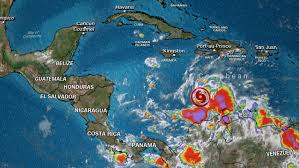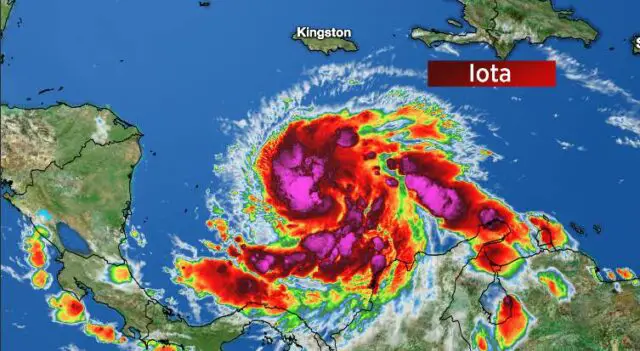
The passage of tropical storm Iota through the Caribbean will cause an intensification of rains in Costa Rica as of this weekend. This was predicted by the National Meteorological Institute (IMN) in its most recent update of the phenomenon, the entity also predicted that the cyclone would reach the hurricane category.
“During the afternoon and evening of this past Saturday, the system continued its movement towards Central America slowly, beginning to have indirect influence in the country,” the Institute said.
Therefore, the Meteorological Office foresees an intensification of rain activity in the Central and South Pacific, where amounts ranging between 20 and 80 millimeters (mm) are expected. In the Central Valley and the North Pacific, rainfall is expected with amounts between 5 and 60 mm.
The same forecast holds for the mountainous sectors of the Caribbean and a large part of the Northern Zone. “With the current analyzes, it is expected that there will be continuous rains and downpours of variable intensity in the South Pacific, as well as in the North Caribbean,” the entity added.
For its part, the National Hurricane Center (NHC) of the United States reiterated its forecast that Iota will strengthen and become a “great hurricane” when it approaches the coasts of Central America. The trajectory traced by the official body of the region locates the impact of the cyclone between Nicaragua and Honduras.
Costa Rica on high alert

Costa Rica for the moment announced – through the National Emergency Commission (CNE) – the extension of the alerts in various sectors of the country, which are detailed as follows:
Orange alert: Cantons of Nicoya, Nandayure, Hojancha, Corredores, Coto Brus, Golfito, Parrita and Quepos.
Yellow alert: Pacific slope and Central Valley.
The CNE also reported the strengthening of operational tasks such as the resupply of four regional warehouses and 12 of the municipal emergency committees. Also, interventions with machinery for cleaning channels were accelerated to minimize the impact of new floods.
The institution attached to the Presidency of the Republic also assists 300 people who are housed in 20 shelters due to the rain activity caused by Eta; At the same time, the opening of new accommodations is planned, in case it is necessary to mobilize the population in high-risk areas.

